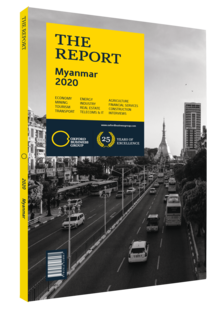New tax law in Myanmar expands registered economy and widens tax base
In 2019 Myanmar’s Internal Revenue Department (IRD) pushed forward with two major reforms – a new tax law and a new tax administration law. The first of the two, the Union Tax Law (UTL 2019), passed by Parliament in September 2019, drew headlines for granting tax amnesty to citizens with undisclosed sources of income. The law brought other important changes too, and demonstrated the government’s commitment to widening the tax base, expanding the registered economy, and improving and diversifying its sources of revenue.
A 2018 study by the Norwegian Institute of International Affairs suggested that the country’s unregistered economy accounted for 50.7% of economic activity between 1999 and 2006, and that this share was unlikely to have contracted much since. The new UTL 2019 is therefore a vital step in addressing the challenges and risks posed by the informal economy.
Union Tax Law
The UTL 2019, which came into effect in October 2019 and will run until September 30, 2020, introduces tax amnesty for citizens with income that is either undisclosed or has “escaped from assessment”. When such income is brought forward, it will be taxed at concessionary rates, except for sums over MMK3bn ($2m), for which the rate remains the same, at 30%. The new rates stand at 3% on income up to MMK100m ($65,200); 5% for MMK100m-300m ($65,200-196,000); 10% for MMK300m-1bn ($196,000-652,000); and 15% for MMK1bn-3bn ($652,000-2m).
In addition, the UTL 2019, which replaces the previous 2014 iteration of the law, made changes to the specific goods tax (SGT). This was brought in for FY 2016/17 and applies excise taxes to a list of particular goods, such as cigarettes, liquor, hardwoods and petrol. In general, SGT has gone up, with more expensive imported wines and liquors also receiving hikes. Gemstones have been taken off the SGT list, but are now subject to a specific gemstone Tax. In general, this new tax is slightly lower than the SGT rate, but products made with gemstones – at one point exempt from SGT – are now taxed at 5%. Another product removed from the list is the export of natural gas, although its 8% tax rate will still apply to domestic sales.
The UTL 2019 also cleared up definitions over goods and services receiving exemption from commercial tax. Moreover, it widened potential exemption or relief to all capital market entities related to the development of the securities market, whereas previously exemption or relief could only relate to those listed on the Yangon Stock Exchange.
Revenue
The most recent World Bank figures show Myanmar’s tax revenue-to-GDP ratio at 6.02% in 2017, in contrast to neighbouring Thailand, where it was at 14.8%, and Cambodia, where it was at 15.8%. Indeed, Myanmar has one of the lowest ratios in the region. At the same time, taxes were responsible for 39.6% of government revenue in FY 2017/18, representing MMK6.1trn ($4bn) out of a total MMK15.39trn ($10bn), according to the ASEAN+3 Macroeconomic Research Office (AMRO). Estimates for FY 2019/20 predict 38.4% of government revenue will come from taxes, representing MMK7.3trn ($4.8bn) in tax revenue out of a total MMK19trn ($12.4bn). In comparison, tax revenue accounted for some 71% of total government revenue in Vietnam in 2018, according to the AMRO.
Tax Administration
The second 2019 reform, the Tax Administration Law, was passed in June 2019 with the aim of boosting tax filing. It introduced new anti-avoidance rules, a seven-year requirement for the maintenance of tax records, simplified appeals, refund and overpayment procedures, and a unified tax identification number for taxpayers, among other measures. The year ahead should see Myanmar’s tax system move forward to the benefit of the government budget and businesses formalisation.
You have reached the limit of premium articles you can view for free.
Choose from the options below to purchase print or digital editions of our Reports. You can also purchase a website subscription giving you unlimited access to all of our Reports online for 12 months.
If you have already purchased this Report or have a website subscription, please login to continue.

